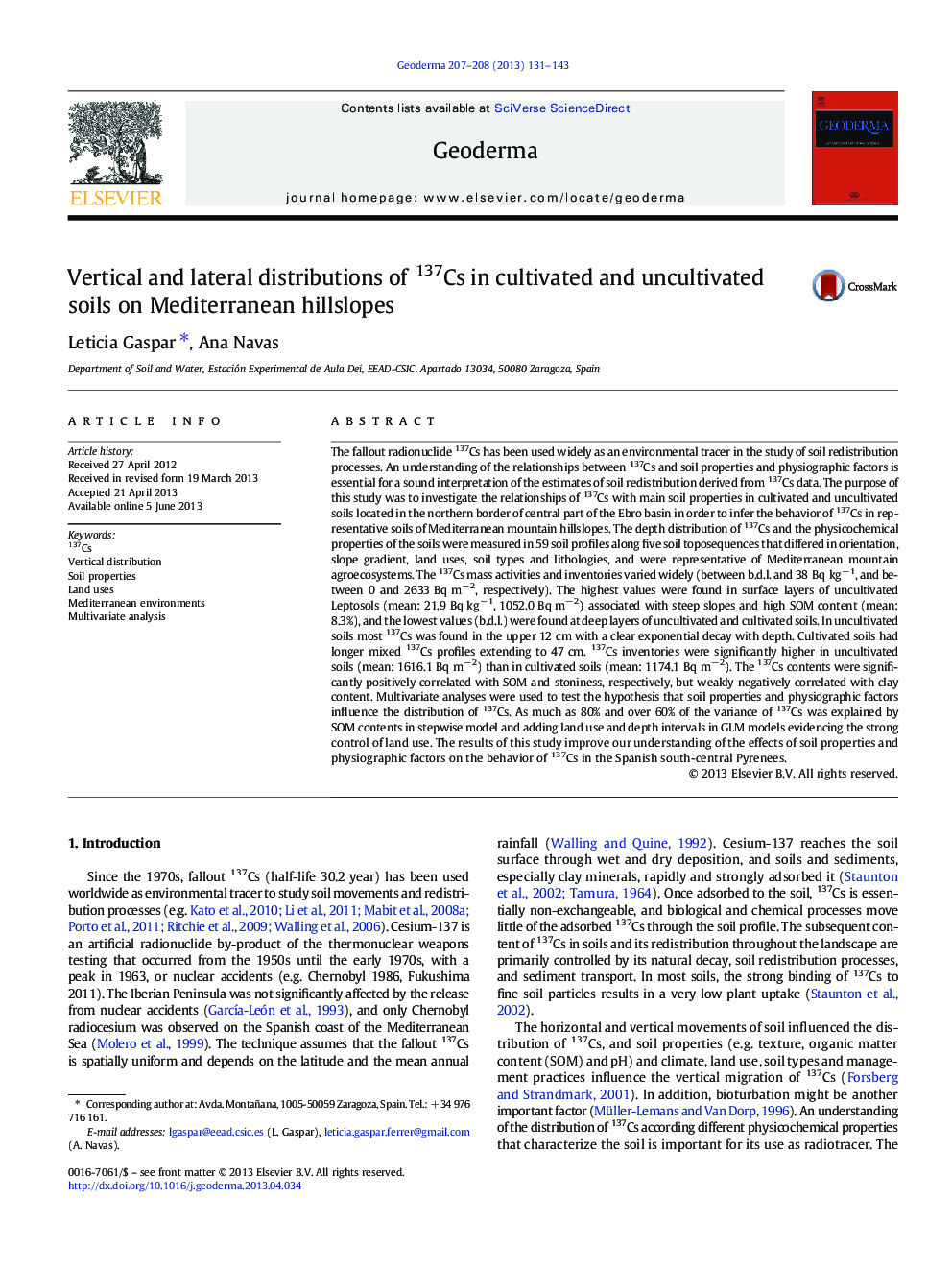| کد مقاله | کد نشریه | سال انتشار | مقاله انگلیسی | نسخه تمام متن |
|---|---|---|---|---|
| 6409160 | 1629482 | 2013 | 13 صفحه PDF | دانلود رایگان |

- Behavior of 137Cs in cultivated and uncultivated soils along soil toposequences.
- Identifying soil properties and factors that affect the depth distribution in 137Cs.
- Distribution of 137Cs closely linked to SOM and coarse fractions.
- Regression and GLM models to simulate 137Cs content in Mediterranean mountain soils.
The fallout radionuclide 137Cs has been used widely as an environmental tracer in the study of soil redistribution processes. An understanding of the relationships between 137Cs and soil properties and physiographic factors is essential for a sound interpretation of the estimates of soil redistribution derived from 137Cs data. The purpose of this study was to investigate the relationships of 137Cs with main soil properties in cultivated and uncultivated soils located in the northern border of central part of the Ebro basin in order to infer the behavior of 137Cs in representative soils of Mediterranean mountain hillslopes. The depth distribution of 137Cs and the physicochemical properties of the soils were measured in 59 soil profiles along five soil toposequences that differed in orientation, slope gradient, land uses, soil types and lithologies, and were representative of Mediterranean mountain agroecosystems. The 137Cs mass activities and inventories varied widely (between b.d.l. and 38 Bq kgâ 1, and between 0 and 2633 Bq mâ 2, respectively). The highest values were found in surface layers of uncultivated Leptosols (mean: 21.9 Bq kgâ 1, 1052.0 Bq mâ 2) associated with steep slopes and high SOM content (mean: 8.3%), and the lowest values (b.d.l.) were found at deep layers of uncultivated and cultivated soils. In uncultivated soils most 137Cs was found in the upper 12 cm with a clear exponential decay with depth. Cultivated soils had longer mixed 137Cs profiles extending to 47 cm. 137Cs inventories were significantly higher in uncultivated soils (mean: 1616.1 Bq mâ 2) than in cultivated soils (mean: 1174.1 Bq mâ 2). The 137Cs contents were significantly positively correlated with SOM and stoniness, respectively, but weakly negatively correlated with clay content. Multivariate analyses were used to test the hypothesis that soil properties and physiographic factors influence the distribution of 137Cs. As much as 80% and over 60% of the variance of 137Cs was explained by SOM contents in stepwise model and adding land use and depth intervals in GLM models evidencing the strong control of land use. The results of this study improve our understanding of the effects of soil properties and physiographic factors on the behavior of 137Cs in the Spanish south-central Pyrenees.
Journal: Geoderma - Volumes 207â208, October 2013, Pages 131-143